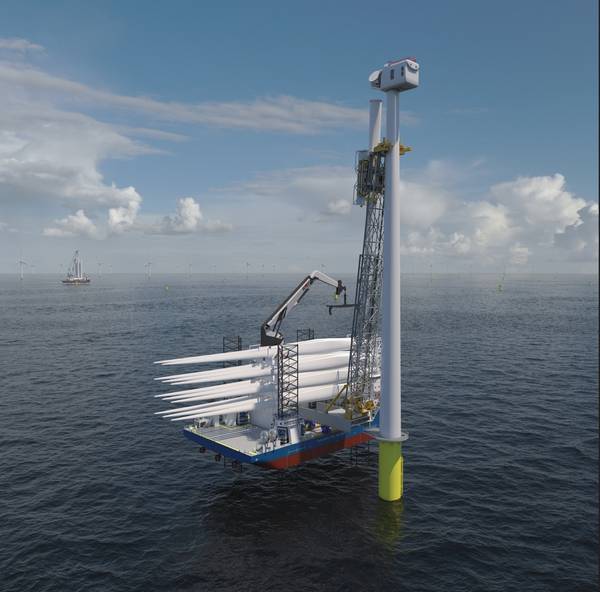
GustoMSC and NOV Lifting & Handling said Tuesday they had developed a solution to improve offshore wind turbine blade installation efficiency.
"Blades are highly susceptible to wind loads, so they currently take the most time to install," the companies said.
The solution has been named Sjøhest - Norwegian for “seahorse."
"Like the seahorse’s unique and strong grasping tail enables it to resist ocean currents, the Sjøhest connects to the tower, creating an aligned movement for safe and efficient blade installation," the companies added.
The Sjøhest Wind Blade Installation (WBI) solution consists of a dedicated new-build NG-5500XL, or a smaller converted jack-up vessel, equipped with a smaller handling crane that picks up the blades from the rack and feeds the trolley. As a telescopic leader boom connects Sjøhest with the already installed tower, the leader boom connection aligns with the tower’s movements.
This, according to the developers, creates an aligned movement between the blade and the tower. Once connected to the trolley, the blade is horizontally transported up along the leader, rotated into a vertical position, and connected to the rotor.
"Major time savings"
"Large installation jack-up vessels have relatively high day rates; therefore, increased installation time or downtime is costly and needs to be avoided as much as possible. Sjøhest offers an alternative installation methodology whereby the larger installation jack-up vessels equipped with heavy lift cranes install the towers and nacelles, while the dedicated Sjøhest WBI jack-up vessel with integrated equipment installs the blades. The installation methodology with Sjøhest ensures major time savings as all three blades per turbine can be installed in one day," the companies said. In addition, the companies said, the installation methodology with Sjøhest enables splitting tower/nacelle and blade mobilization into separate onshore hubs.
"Due to their size, existing and future blades create a huge necessity for space. Furthermore, quayside blade loads are far less than towers and nacelles. The mobilization split creates much more flexibility in the mobilization location and benefits the entire logistics process," the companies added.